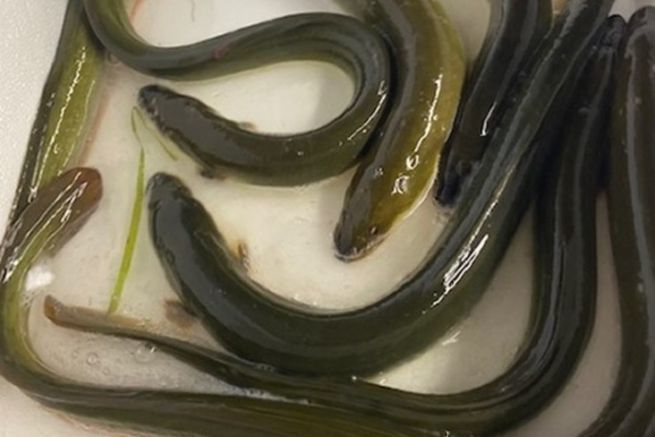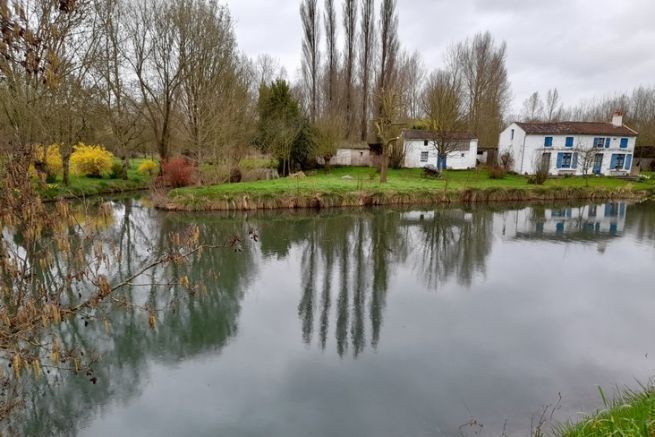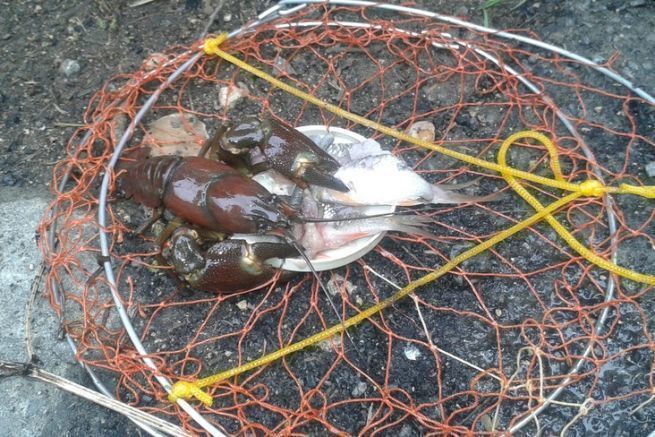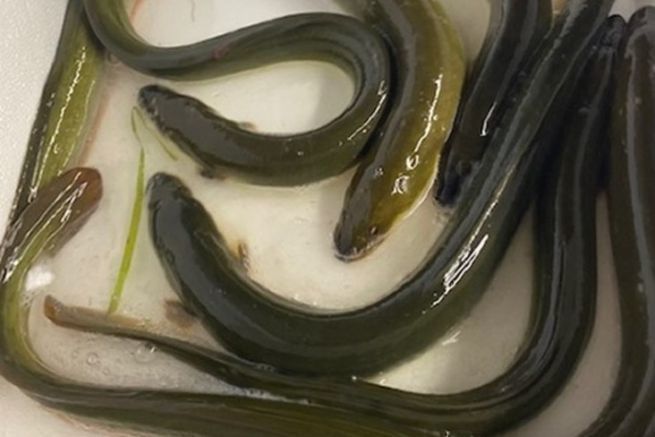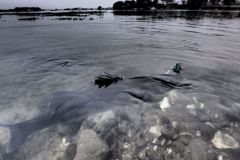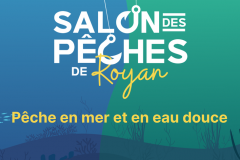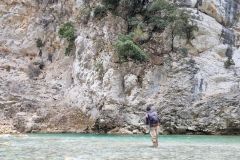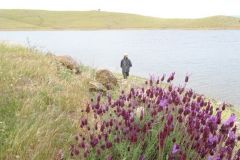The eel, a migrating fish
The eel is found all along the Atlantic coast of France. It is a fascinating fish by its habits, its mode of reproduction, its endurance, as much as by its appearance.
Like other migratory fish, eels travel thousands of miles to reproduce, spending part of their lives in the salt water of the ocean and part in the fresh water of rivers.
This great adventure begins in the Sargasso Sea, off the West Indies, the only known breeding ground for European eels. The birth of the fry takes place in the depths. During one to three years, the fry, a few millimeters long, follow the currents to reach the European coasts. When they arrive, they become elvers, a few centimeters long and still transparent. They go up the rivers and streams, grow up and live there for a dozen years. Then, the eel of avalaison resumes its road towards the Sargasso Sea to reproduce and unfortunately die there.
Men have been actively fishing it since the Middle Ages, using all sorts of techniques. In the Marais Poitevin, it is mainly fished with traps and also with vermée.
Until recently, other fishing methods were used, but they have been banned to protect the species. The only way to protect the eel, in my opinion, would be to ban the fishing of glass eels in winter, but this is not going to happen any time soon, because the trade is very lucrative.
Nowadays, eel populations are decreasing all over Europe. Especially since glass eels remain a highly sought-after and extremely expensive delicacy. Also, poaching does a lot of harm to the species.
In the Marais Poitevin, as elsewhere, the crossing of dams provides an additional difficulty for elvers. Glass eel ladders have been installed and are apparently effective.
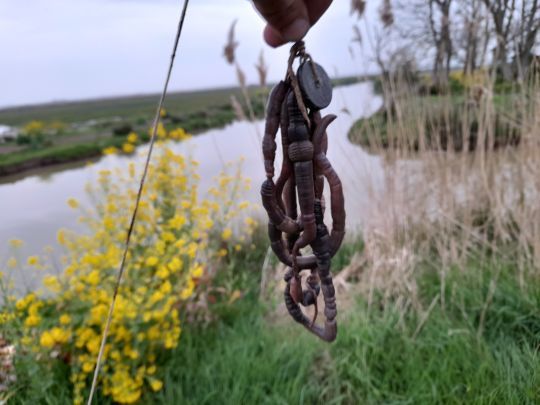
Eel fishing with vermee
An ancestral technique, a little out of fashion, the vermee is still the most efficient way to catch eels. First of all, you have to get a good twenty large earthworms that you thread with a long needle on cotton thread or wool. You get a thread of earthworms about a meter long, which you make a ball by wrapping it around your fingers. All that remains is to attach this ball of worms with a lead. It is then attached to the end of a strong line connected to a strand of bamboo that will serve as a fishing rod.
Equipped with a float or not, this line will be plunged under the rod by prospecting the banks.
The fisherman gives light impulses to his line to attract the eel. Smelling the worms, the eel bites the bait. The eel then hooks its teeth into the cotton or woolen thread and the fisherman only has to raise the line slowly when he feels the eel at the end of his line.
The eel will unhook quickly once out of the water, that's why we place an umbrella upside down on the water to make them fall in or directly in the boat if you proceed that way. As there is no hook, the eels will unhook themselves and remain trapped. This fishing is subject to regulations.

Eel fishing with a davit or a creel
A davit is a traditional creel used for fishing eels in marsh areas. Originally made by hand, most often in wicker or bramble, they are now made of wire mesh or plastic.
It is elongated and has several airlocks. The creel is made up of a single funnel-shaped entrance followed by two spaced chambers, themselves having a funnel-shaped entrance. It is closed by a plug, which once removed, allows to recover the trapped individuals. Once immersed in water, the pots will catch the eels that will swim inside and remain trapped.
They can be placed by throwing them from the shore or by using a boat. To raise them, a hook at the end of a handle, often made of bamboo, is necessary. This fishing method is also subject to specific regulations.
Regulations in the Marais Poitevin
The Marais Poitevin extends over three departments, the Vendée, the Deux-Sèvres and the Charente-Maritime. On all these departments, the regulations are different.
For the three departments, the eel pots must have a maximum depth of 1 meter, a width of 60 centimeters, not including the wings, and an entrance diameter of 40 millimeters maximum. The spacing of the rods is 10 millimeters. It is possible to fish with a maximum of three pots.
For the opening dates of the eel, refer directly to the website of the federation of the department, because already from one basin to another, the dates differ. Fishing for elvers and silver eels is prohibited for amateur fishermen.
Any angler, with a line or with a gear, in Vendée and Charente-Maritime, while fishing must be able to provide the control agent with his eel fishing logbook. Failure to do so is punishable by a 5th class fine.
In the Deux-Sèvres, only anglers who fish for eels with a hook and line are required to have their catch book.
